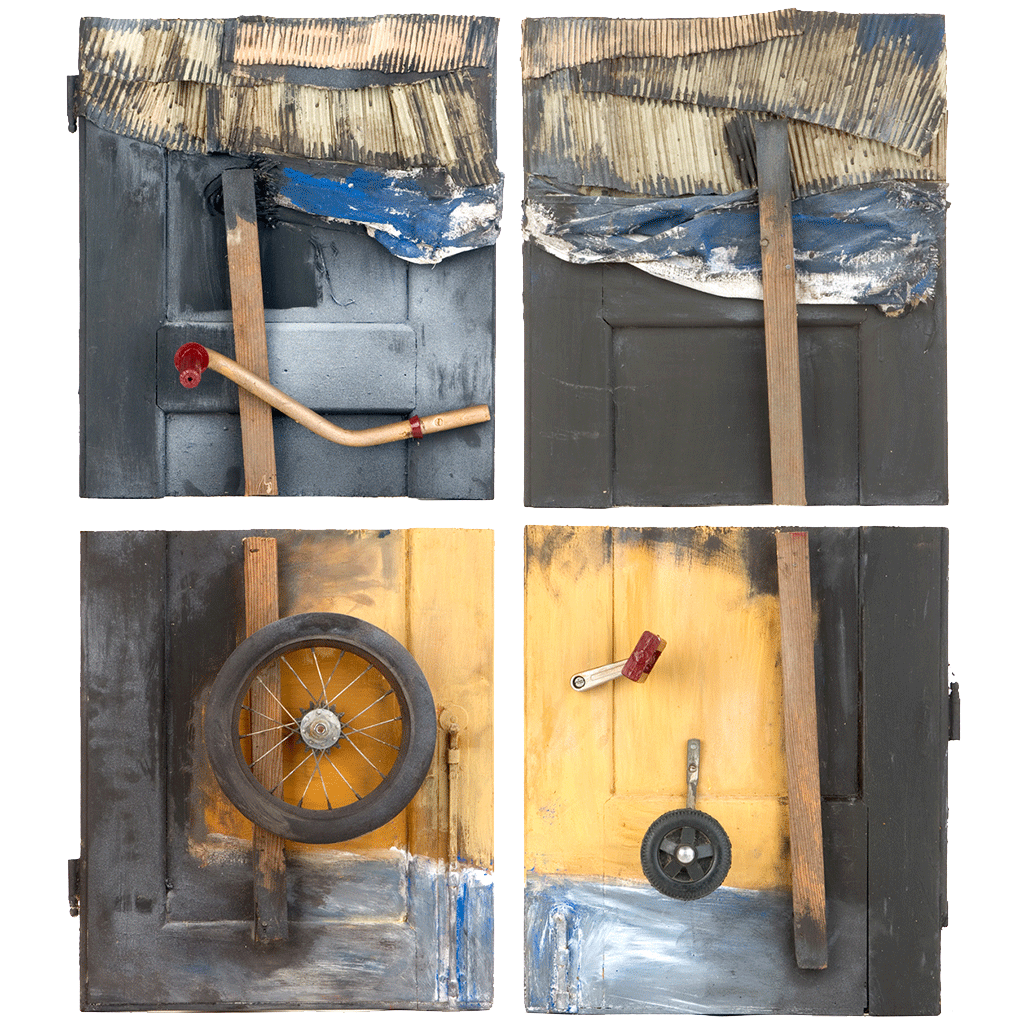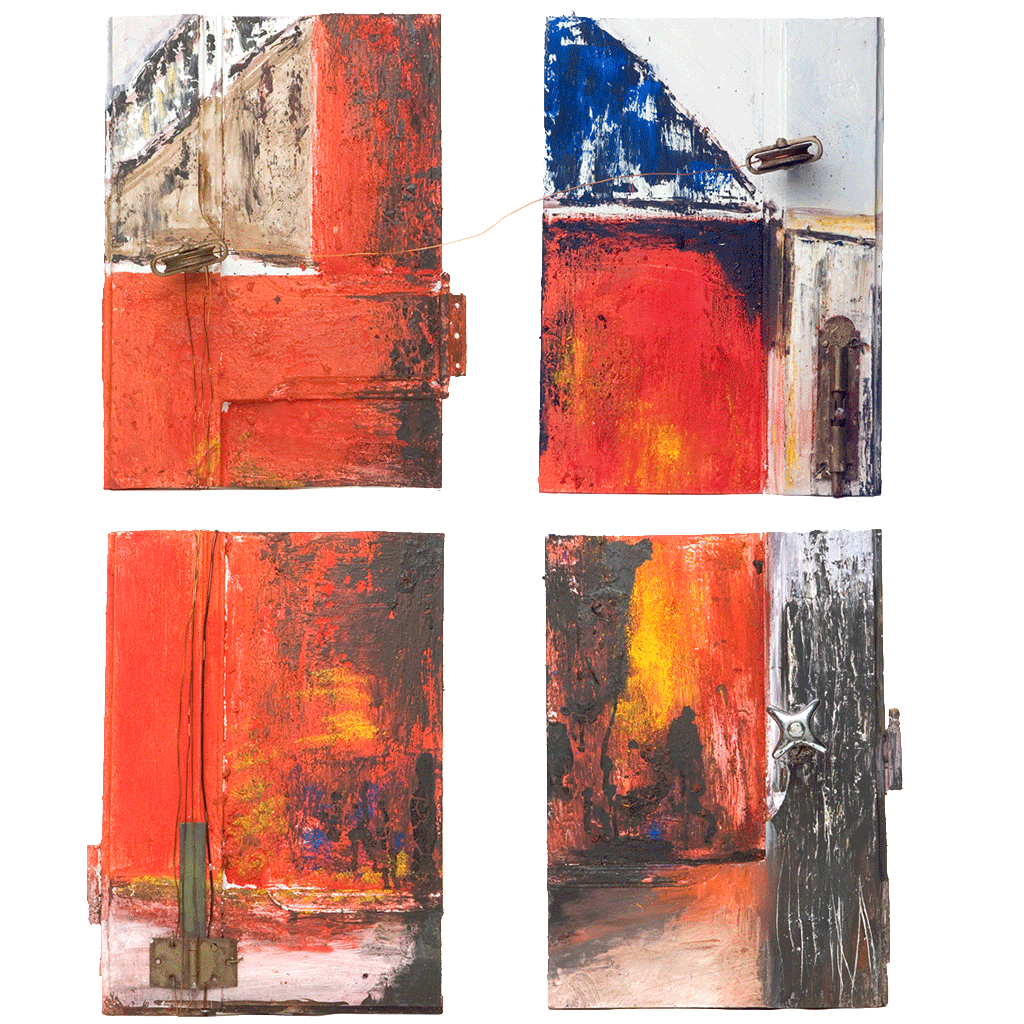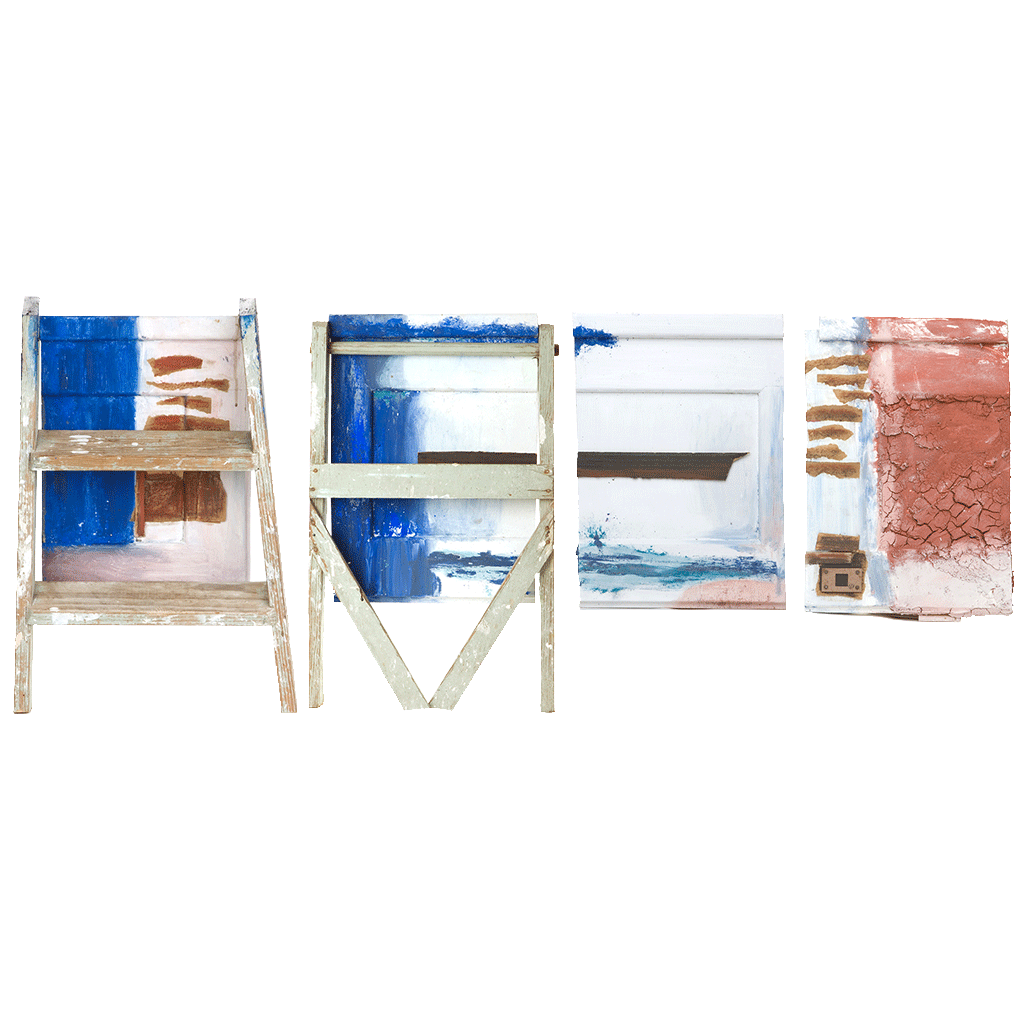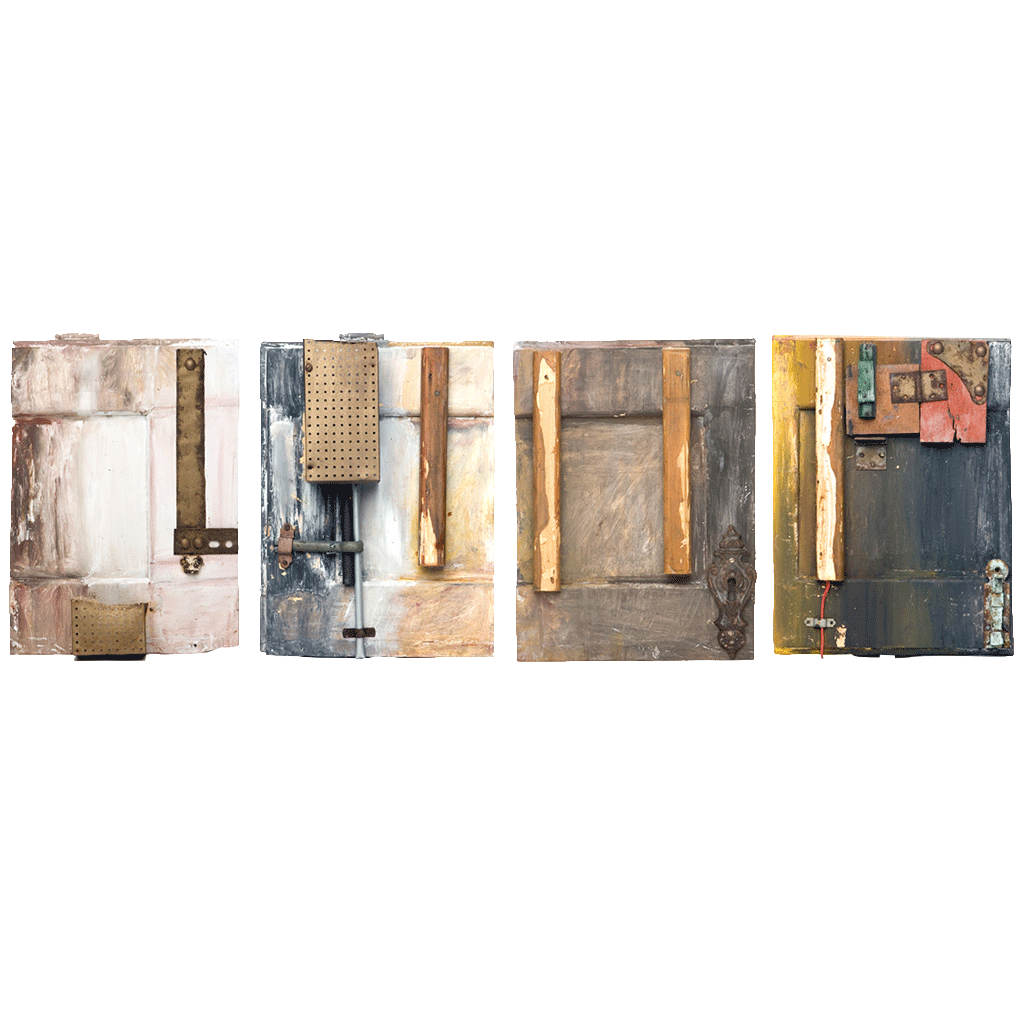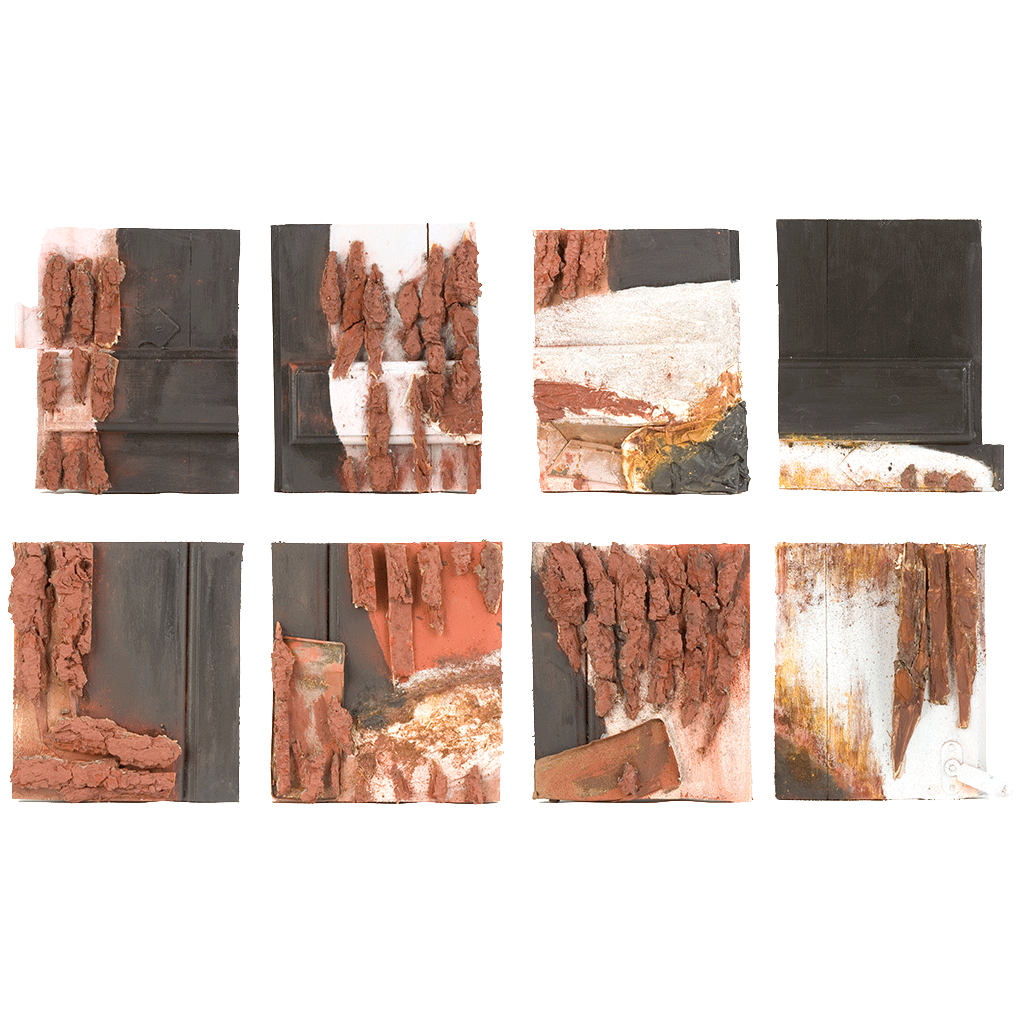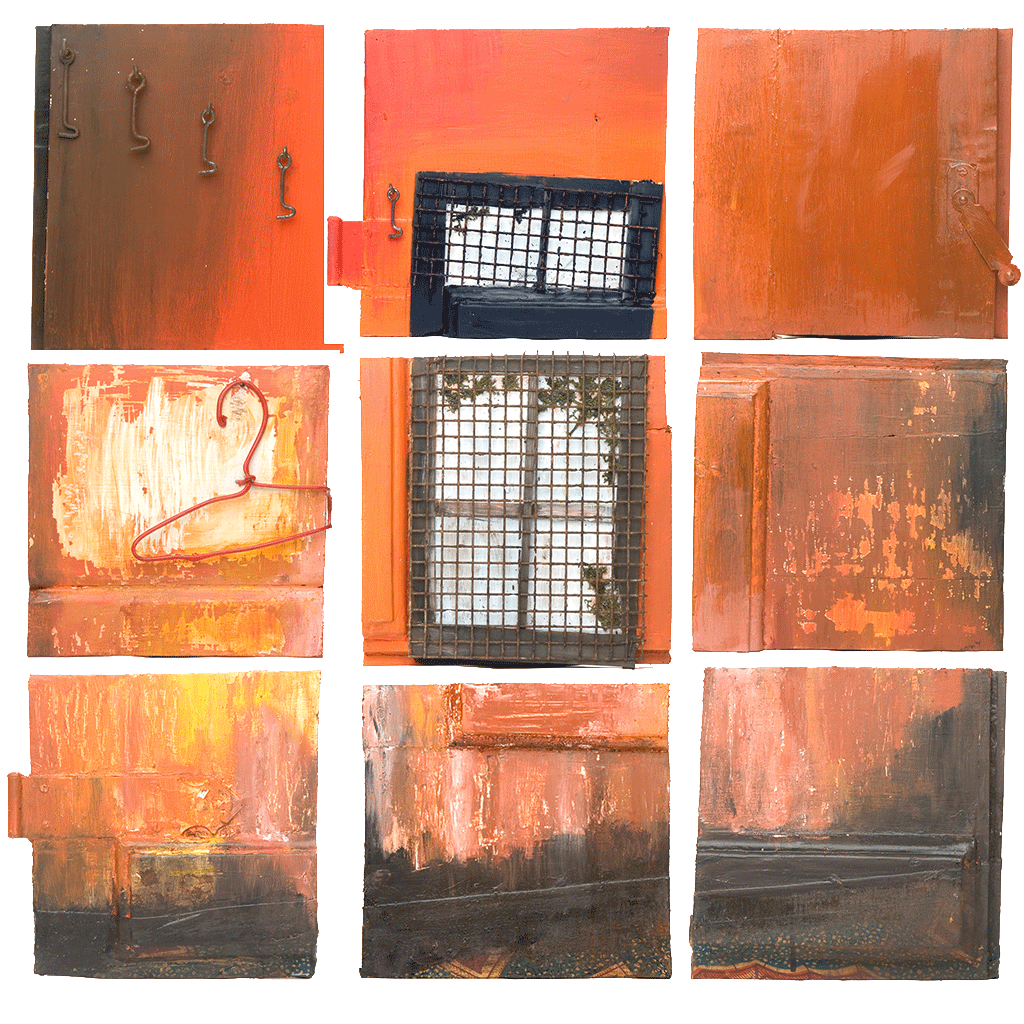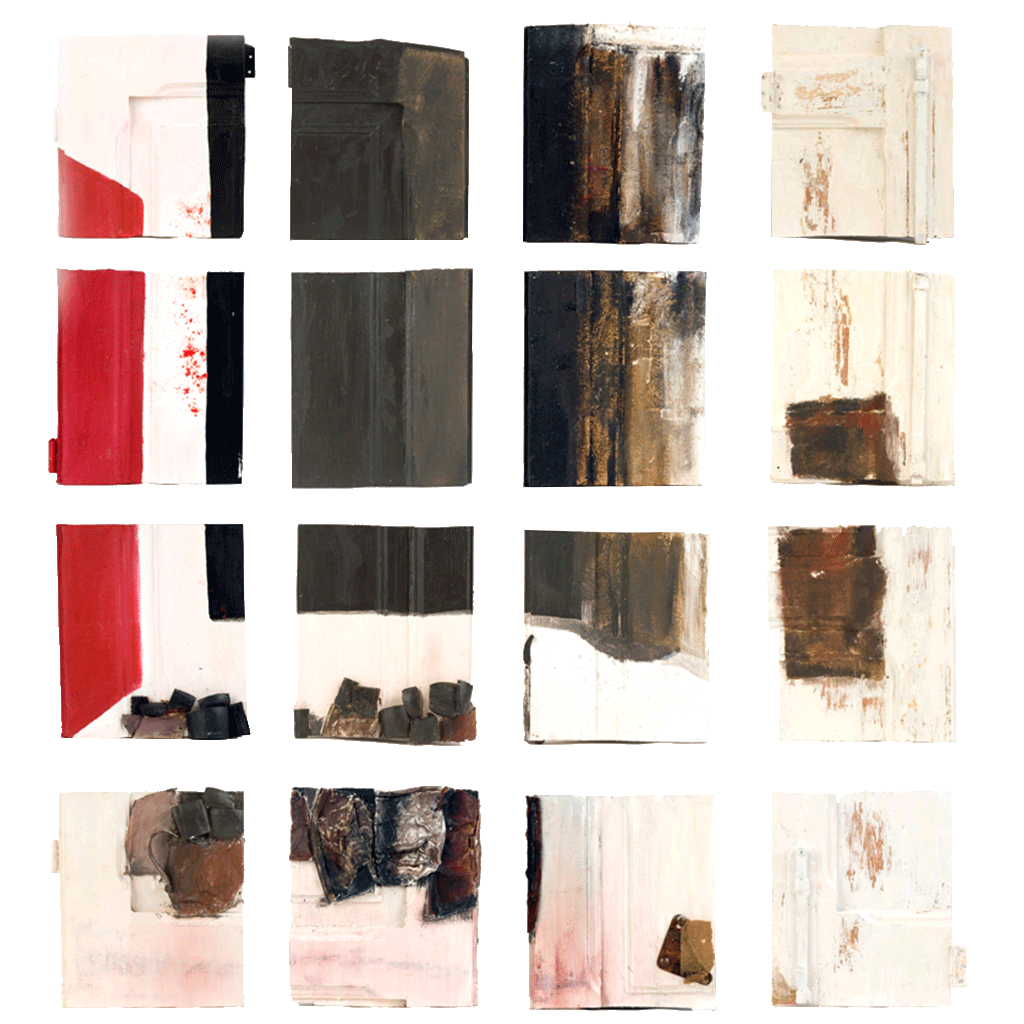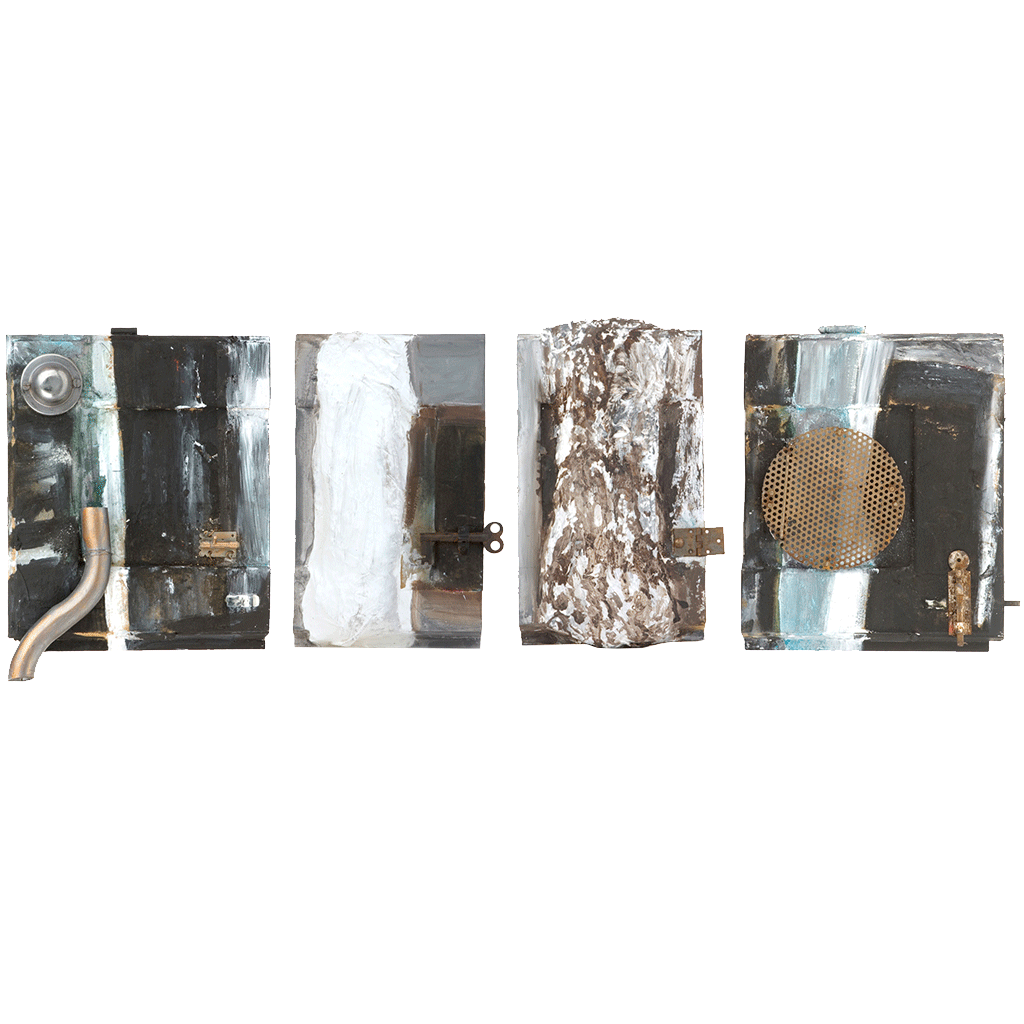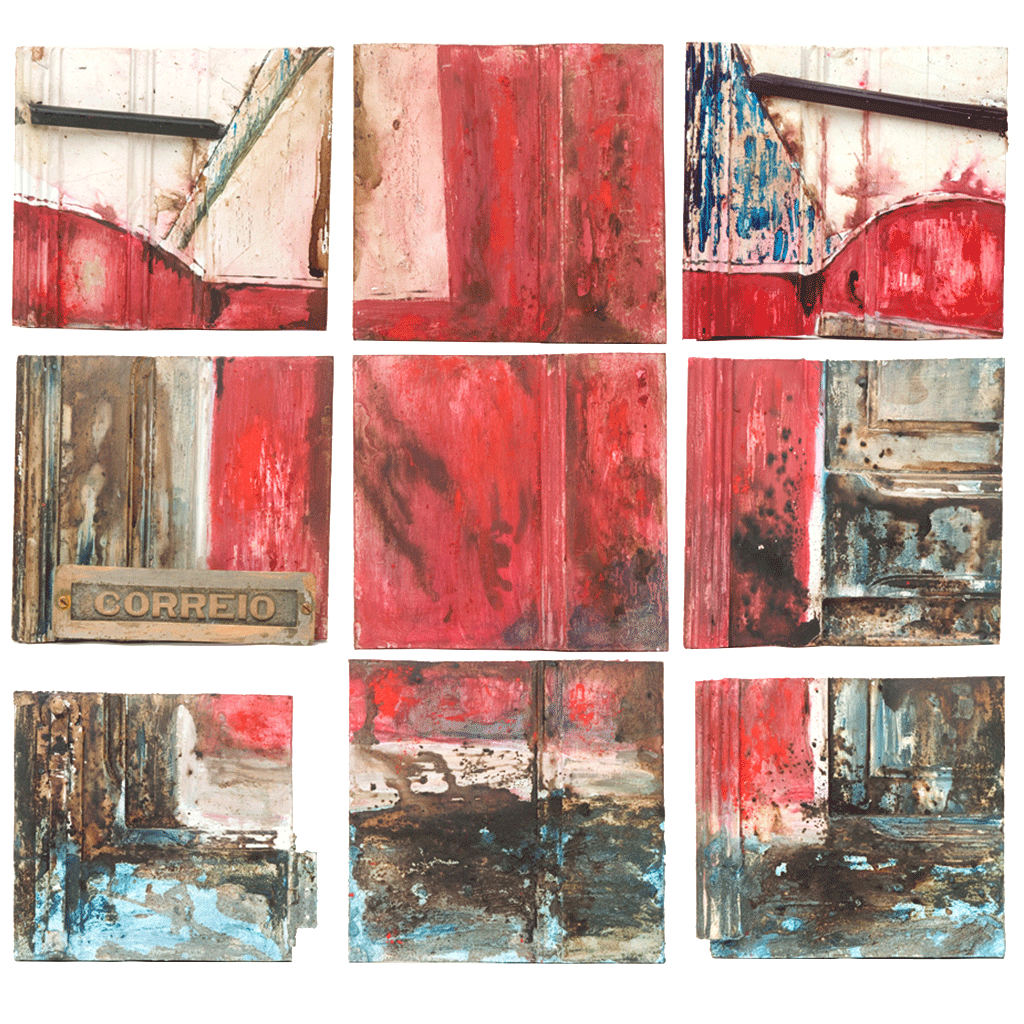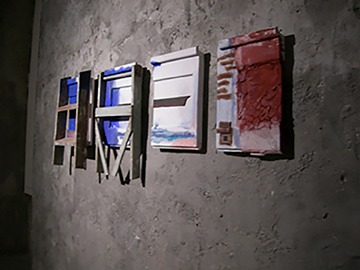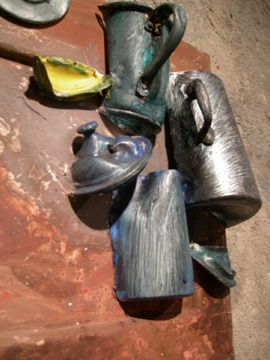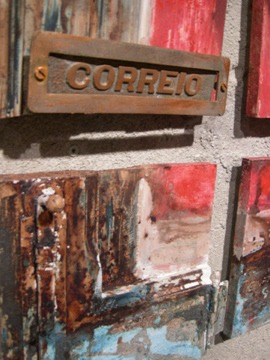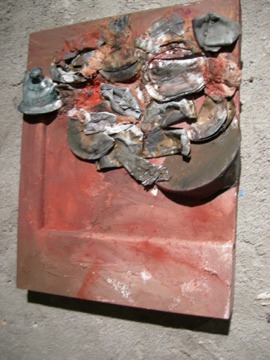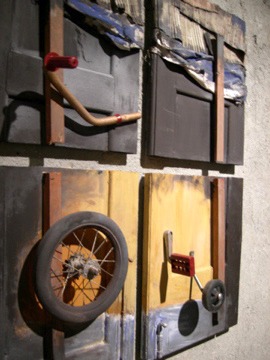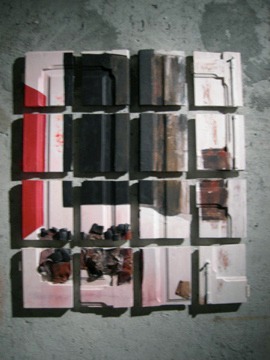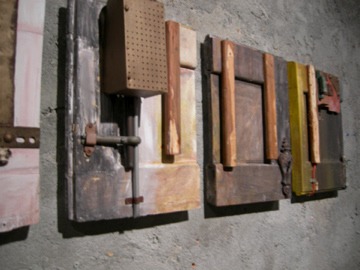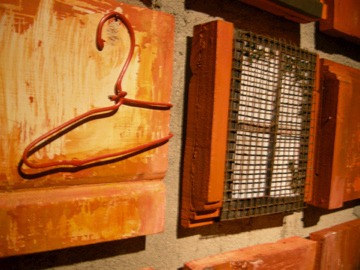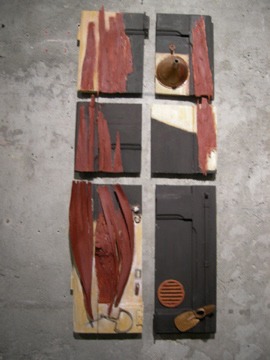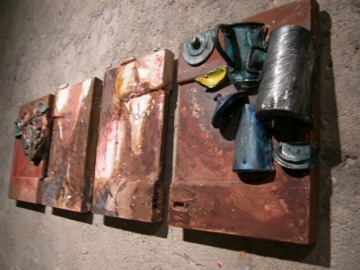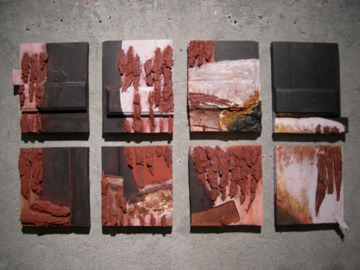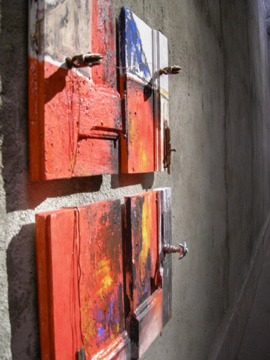Painting Exhibition
Sim.biose
I developed this work while passing through Mozambique, more specifically on the island of Mozambique, which, due to its rich history, architecture and mystical beauty, aroused my interest in artistic exploration.
The island of Mozambique, with just 4 km of coastline, was for 400 years the largest intercontinental maritime mercantile center, a trading port on the route from Europe to the Indian Ocean, with strong Arab, Indian and Portuguese architectural influences mixed in. This haven was listed as a UNESCO World Heritage Site in 1991.
Year: 2006
Venue: Deer Room, Natural History Museum, Lisbon
Technique: Mixed media, asemblage, acrylic, paper and hardware on wood.
I analysed various cultural, historical and architectural factors through graphic and photographic records of the island’s ruins.
I was fascinated by such beauty, which despite being partially destroyed, degraded, miserable and very dirty, gave me a clear perception of the magnitude of the past.
Year: 2006
Venue: Deer Room, Natural History Museum, Lisbon
Technique: Mixed media, asemblage, acrylic, paper and hardware on wood.
I developed this work while passing through Mozambique, more specifically on the island of Mozambique, which, due to its rich history, architecture and mystical beauty, aroused my interest in artistic exploration.
The island of Mozambique, with just 4 km of coastline, was for 400 years the largest intercontinental maritime mercantile center, a trading port on the route from Europe to the Indian Ocean, with strong Arab, Indian and Portuguese architectural influences mixed in. This haven was listed as a UNESCO World Heritage Site in 1991.
I analysed various cultural, historical and architectural factors through graphic and photographic records of the island’s ruins.
I was fascinated by such beauty, which despite being partially destroyed, degraded, miserable and very dirty, gave me a clear perception of the magnitude of the past.
Each place is magical, capable of transporting us to ancestors, to experiences that I didn’t know, but whose scenarios the imagination has tried to complete.
Houses that were once homes are now ruins. Ruins with atriums of dirt and weeds, staircases that lead nowhere. Peeling walls, revealing the different building materials – stone, wood, sand, paint. The walls that remain, exposed, with paint that still survives and mixes with the fungi from the humidity, giving way to the moss that is settling in. The colors that change with the climate, giving rise to contrasting tones, cold and warm, causing gradients of ochres, greens, rust, oxides… The roots of the trees conquer the land, break through the mosaic floors characteristic of the period and grow like mushrooms.
Houses where the original roof, already destroyed, has been replaced by treetops. Palatial houses that are now interior gardens sprouting from every opening. Windows and doors, which have lost their function, remain as decorative elements, capable of transporting us to ancestors, to experiences that I didn’t know, but whose scenarios the imagination has tried to complete.
It is between these dichotomies that I have developed my plastic work. With the intention of using only geological material that I collected on the island and its surroundings, such as pigments; earth, yellow and orange; sand, black and white; graphite; wood – sawdust; charcoal, etc.
With the aim of plastically representing part of these ruins in metamorphosis.
I tear the whole apart so that the homogeneity stands out the particular.
